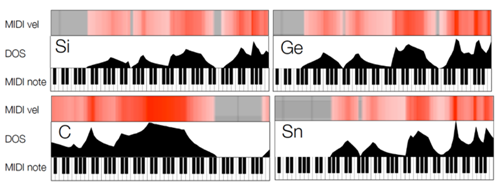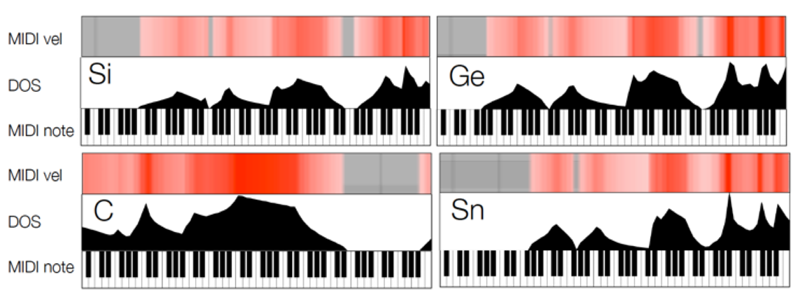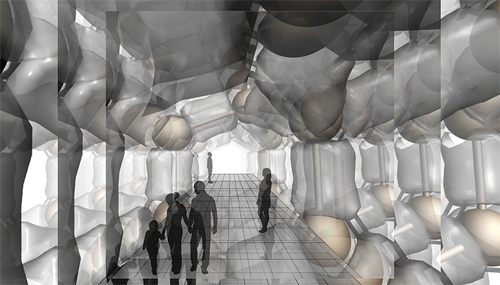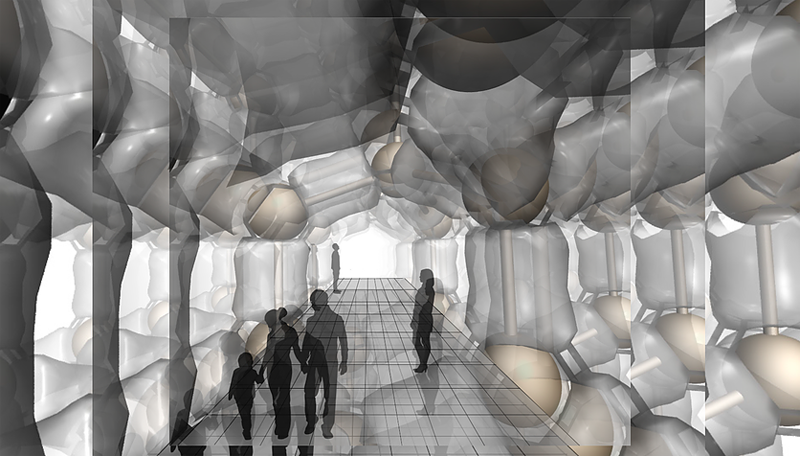Arts & Culture: Materials as Musical Muses
For years, Marco Buongiorno Nardelli led a double life. During the day, he worked as a physicist, computing the properties of molecules and materials or optimizing designs of nanodevices for energy conversion. But at night, his head turned to music, as he jammed with other musicians in smoke-filled jazz clubs or stayed up late mixing electronic sounds with the street noises of Indian cities. Today, these two facets of his life have merged into “MaterialsSoundMusic”—a project that uses music to explore materials data and, in turn, uses such data to inspire musical compositions.
Buongiorno Nardelli, who is now a professor of physics at the University of North Texas (UNT), conceived his project at the time of the Materials Genome Initiative, which the White House launched in 2011 to accelerate the discovery of new materials. As part of this initiative, he participated in the development of AFLOWLIB—an online database cataloging the properties of millions of existing or theorized materials. Researchers around the globe can freely access the database to fish for a superconductor, metal, or ceramic that best suits their application.
In developing this database, Buongiorno Nardelli pondered two questions. The first had to do with sifting through AFLOWLIB’s massive amounts of data. How could the properties of a material be represented so that researchers can quickly perceive and evaluate them? The second was an outreach challenge. Materials aren’t as sexy as black hole mergers or the “God particle.” How could electronic properties or crystal lattices be made more appealing to the public’s imagination? For Buongiorno Nardelli, who’d been playing and composing music since the age of six, the obvious answer to both questions was to use sound.
First, he had to give materials a voice. He did so through data “sonification”—the auditory equivalent of data visualization. Rather than plotting points on a graph, sonification presents data to our ears. The idea is by no means new—think of the clicks from a Geiger counter—and it has recently been explored in various fields, from astrophysics to climate science. Materials, however, had so far remained mute.
To sonify materials, Buongiorno Nardelli designed algorithms that select notes based on datasets of electronic band structure and density of electronic states—two properties that define how electrons move in a material. One of these algorithms maps energies between −15 and +5 eV onto the 88 keys of a piano and assigns an amplitude to each note based on the density of states at the corresponding energy.
Sonification examples for materials from the AFLOWLIB database, like silicon, carbon, germanium, or tin, can be found on his website. As you may hear, materials don’t generate beautiful cello suites or catchy pop riffs, but jarring note combinations, like a cat jumping on a keyboard. However, each material sings a unique and distinguishable “chord.” Even materials like silicon and germanium, whose density of states look very similar when plotted on a graph, produce chords that can be easily told apart even by an untrained ear.
Could this selectivity really help scientists find what they want in materials databases? It is too early to say, admits Buongiorno Nardelli. These days he is running tests in which he asks participants to pick similar materials from a set of options, based on either density-of-state plots or sounds generated by his algorithm. The first results are encouraging: Acoustic and visual tests are similarly accurate. “But sonification is at a very early stage,” he says, “and there’s much room for improvement by training listeners and refining our sonification tools.” This groundwork, he hopes, could lead to databases in which researchers can find materials with similar properties in the same way that users of Spotify or Pandora can discover songs with similar qualities.
Scientific utility, however, is not Buongiorno Nardelli’s only goal: He also aims to mine material data for musical inspiration. In some of his latest compositions, he maps material sounds onto different scales, randomizes them, creates loops and repetitions, or mixes them with music played by real instruments. His prolific catalog of compositions includes “Music for 88 keys”—a suite born from mixing sonified data of diamond, zinc oxide, and gold—and “EleKtrIoN”—derived from simulated diamond properties. “His work shows that data can sometimes spark surprising and beautiful musical ideas that we musicians wouldn’t have come up with,” says Jon Nelson, composer and associate dean of UNT’s College of Music.
The emotional connection offered by music, Buongiorno Nardelli hopes, could help audiences realize how rich and beautiful materials can be. He is now designing an installation in the form of a gigantic crystal structure embedded with sonified data from that material. Visitors to the installation would have the sensation of walking inside a crystal and hearing the beating of its phonons or the relentless dance of its electrons.
And to engage the public more, he is also envisioning a music competition to showcase data-driven music created by researchers and musicians around the globe. So if you think your topological insulator’s got talent, stay tuned.
(A calendar of upcoming SoundsMaterialsMusic performances in Europe and the United States can be found here.)
–Matteo Rini
Matteo Rini is the Deputy Editor of Physics.







